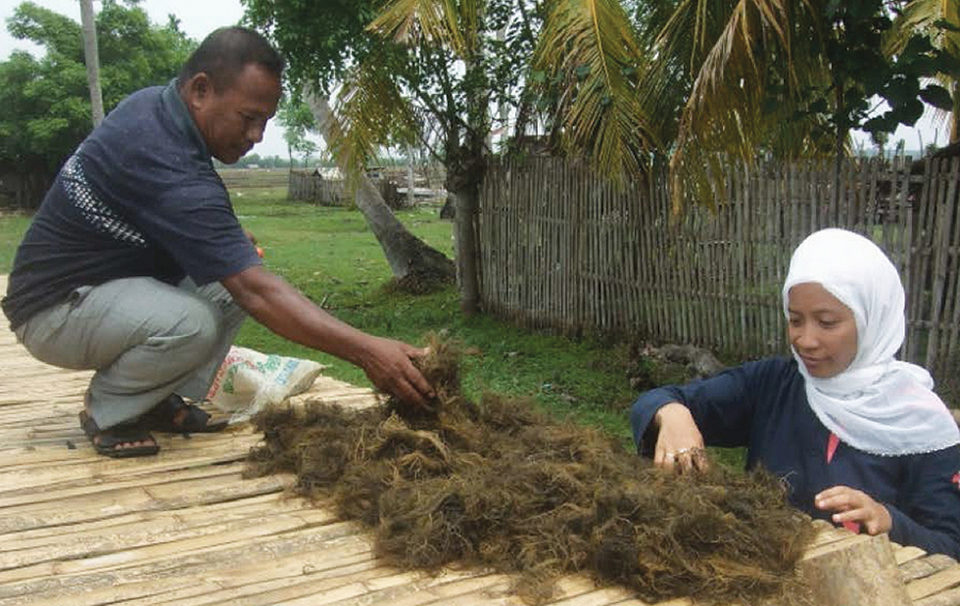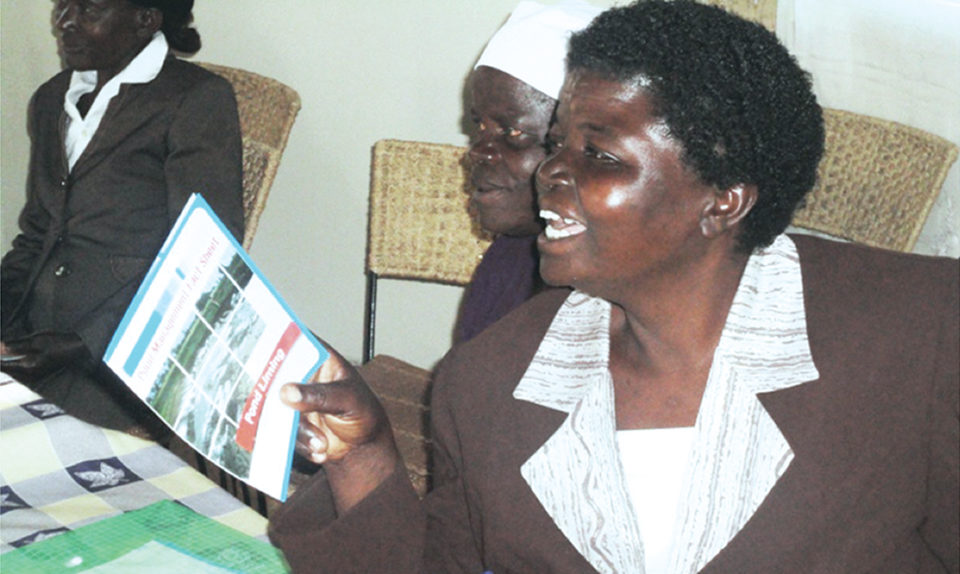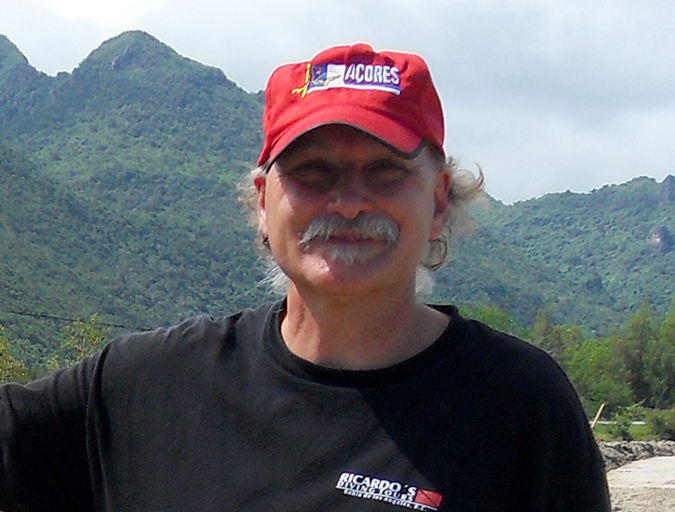AquaFish used VCA as a tool to increase income and nutrition for small-scale fish farmers

By the middle of this century, global population is expected to reach 9.6 billion, and food production must keep pace. The current and expected growth of aquaculture across the globe will continue to require innovation and adaptation, especially in the emerging markets of developing countries. Successful aquaculture supply chains require access to market information, reliable transportation, good communication and relationships, and increasingly, access to technology.
Value chain analysis (VCA) is a tool used to improve efficiency and equity in aquaculture markets. Value chains are complex, and VCA studies in aquaculture look at both economic and social elements of the value chain, focusing on where value can be added. This increases transparency and opens up opportunities for economic improvements to quality, processing, safety and value-added products.
Attention is also paid to who is involved along the chain, the intricate relationships between linkages and how individuals and groups stand to benefit or be harmed from a given policy, change in management or technology. With a more thorough understanding of all reference points along the aquaculture value chain, opportunities arise for improved performance of the entire aquaculture sector.
Gender integration
Both women and men are vital to the viability of the aquaculture industry in developing countries. Thus, gender integration is essential for the successful growth of the sector. Women are involved in aquaculture from pond to platter, playing significant roles in global food production and ensuring the nutritional well-being of households. Understanding value chains can help uncover where women are involved and how they can benefit or be harmed by interventions along the chain.
In developing countries, women produce over half the food, bear most of the responsibility for household food security and increasingly contribute to the household through income-generating activities. In recent years, women’s involvement in agriculture activities has expanded to meet increasing global food production demands. However, their roles are often limited by lack of access to economic opportunities, education, capital and technology.
Typically, women are not equally represented along value chains. Rather, they tend to be concentrated in high-risk and low-power positions in the middle.
AquaFish research
The AquaFish Innovation Lab (AquaFish), headquartered at Oregon State University in Oregon, USA, has conducted research using VCA as a tool to increase income and nutrition for small-scale fish farmers through improved market participation and efficiency. Integrating women into the aquaculture value chain is part of a systems approach to improve the economic and social benefits of aquaculture.
AquaFish work in Africa and Asia has identified some of the underlying barriers to women’s participation and has subsequently begun to develop strategies for overcoming them.
Improving women’s participation in Africa
From 2009 to 2012, AquaFish conducted a VCA and consumer preference study to ascertain the roles of women in aquaculture in Kenya and Ghana. In Kenya, the goal was to identify the primary constraints to participation for women in tilapia and catfish aquaculture.
Major actors in the value chain included input suppliers, suppliers of juvenile seed fish, fish farmers and fish marketers. Women represented the majority of wild fish marketers and also the majority of wild and farmed fish consumers.

In response to dwindling wild fish stocks and the resulting economic impacts, project partners held a workshop for women wild fish traders in Mumias, Kenya, in November 2010 to provide outreach on crossing over to aquaculture. The aquaculture industry in Kenya is growing rapidly and women can improve their economic welfare by increasingly entering the chain as fish farmers and hatchery producers.
Concurrent research was conducted in Ghana to assess the value chain of farmed tilapia. The study showed that women dominated fish processing and interacted with all of the key value chain actors in this role. They provided fish-gutting and scaling services to traders, foodservice providers and consumers at distribution points and sales outlets. The women involved were mostly enterprising individuals accountable to themselves, but some worked in groups and provided their services together at markets.
The study suggested that growth in the sector was expected to increase opportunities for processors, but communication and safety must be improved in order to benefit from this growth. Organizing into cooperative groups was one suggested method to help both the processers and consumers gain access to government assistance. As demand for fish increases and more safety standards are required, these groups will have better access to opportunities and technologies in processing and sanitation for personal protection and food safety.
Organization and communication play a critical role in efficient aquaculture markets. Therefore, access to market information and the nature of information flow have become key factors for maintaining competitiveness for men and women.
AquaFish researchers worked with the Kenyan government to examine women’s access to market information in the fishery sector and analyze mobile information networks for women fish marketers. This foundational work has become a model for research on market-based cell phone data in neighboring Uganda. Research planned through next year aims to improve text-based fish market and fingerling supply information to Ugandan markets and provide a new extension mechanism for broad-scale outreach to fish farmers.
Expanding markets in Asia
AquaFish research conducted in the rural northwestern province of Aceh, Indonesia, from 2009 through 2013 combined VCA and technical training to successfully introduce seaweed farming to communities recovering from a 2004 tsunami that devastated shrimp aquaculture in the area. Research efforts addressed the challenge of rebuilding shrimp aquaculture with a renewed focus on sustainability.
Training activities focused on best management practices for small-scale tambak ponds through seaweed and shrimp polyculture. An effort that started out as restoration assistance grew from cultivating Gracilaria seaweed for pond effluent removal to a broad VCA of the seaweed markets of Indonesia and a series of workshops to enhance the benefits of growing and selling seaweed.
AquaFish conducted a VCA of the seaweed market in Aceh in response to growing demand in the ports of Jakarta, Sulawesi and Surabaya, the major transshipment points of seaweed products. The study looked at the roles of key players in the industry, logistics, transaction flows between market levels and external market influences. The results suggested that communication about product quality standards and adequate facilities for optimal drying were some of the major barriers for building successful relationships between rural farmers and professional buyers.
In response, AquaFish partners reached over 220 farming families through nine workshops to teach men and women how to farm, dry and process seaweed for optimal sale quality. One such workshop taught farmers how to construct drying racks from local materials to maintain quality for profitable, high-grade agar production. Indonesia is one of the world’s largest exporters of agar, a seaweed by-product used throughout the food industry and in pharmaceuticals as a thickener and stabilizer.
Additional workshops taught women household recipes and the nutritional benefits of using Gracilaria. Over 100 famers adopted seaweed polyculture in Aceh.
A commercial seaweed buyer in Medan, Sumatra, committed to buying 14 mt a month and to lending baling equipment and additional drying tables to farmers. Thanks to the efforts of AquaFish researchers and partners, this budding new seaweed market is contributing to more sustainable shrimp farming and has become a promising new source of income generation and nutrition in rural Indonesia.
Gender equity in value chains
Gender integration in value chains represents an important innovation in our understanding of the significant roles women play in the health of households, economies and aquaculture development. This awareness, along with the early VCA efforts described in this article, inspired AquaFish’s leadership in the first globally focused meeting on gender equity in aquaculture value chains.
Three special sessions on “Markets and Value Chains for Small Aquaculture and Fisheries Enterprises With a Focus on Gender” at the International Institute of Fisheries Economics and Trade Conference helped bring gender integration to the forefront of VCAs. These sessions included 17 presentations, representing different streams of scholarship from around the globe attempting to understand the complex relationships that influence market performance for smallholder farmers, including value-added distribution, optimal institutional arrangements and policy approaches.
Common patterns emerged among the presenters, acknowledging the concentration of less-educated, resource-poor women at the low value end of chains. Outcomes of this visionary global forum can be found at the Gender in Aquaculture and Fisheries website – http://genderaquafish.org, and session proceedings are available on the Aqua-Fish website at http://aquafishcrsp.oregonstate.edu/page/proceedings. Based on past research, collaboration, education and outreach successes, AquaFish and partners are continuing to use VCA as a tool to enhance aquaculture markets and improve gender equity in the sector.
(Editor’s Note: This article was originally published in the September/October 2014 print edition of the Global Aquaculture Advocate.)
Authors
-
Paris Edwards, M.S.
Research and Gender Coordinator
AquaFish Innovation Lab
Oregon State University
Corvallis, Oregon 97331 USA -
Hillary Egna, Ph.D.
Director
AquaFish Innovation Lab
Oregon State University
Corvallis, Oregon 97331 USA -
Stephanie Ichien, M.S.
Graduate Research Assistant
AquaFish Innovation Lab
Oregon State University
Corvallis, Oregon 97331 USA -
Jenna Borberg, M.S.
Research and Communication Manager
AquaFish Innovation Lab
Oregon State University
Corvallis, Oregon 97331 USA[117,100,101,46,101,116,97,116,115,110,111,103,101,114,111,64,103,114,101,98,114,111,98,46,97,110,110,101,106]
Related Posts

Innovation & Investment
Aquaculture America 2017: Communication key to the future
This year’s Aquaculture America in San Antonio, Texas, provided significant learning and networking opportunities. It successfully brought together 14 U.S. aquaculture organizations and more than 1,600 participants from Europe, Asia, Africa and Australia.

Innovation & Investment
GOAL 2017 recap: The aquaculture opportunity has hurdles to clear
The great aquaculture opportunity – assuming responsibility as a reliable and predictable source of nutrition for a growing global population – would be better accomplished with a greater sense of confidence, according to keynote speaker Pearse Lyons.

Intelligence
Making the case for a seafood-based economy
The “Towards a Seaweed Based Economy” report made the case that poor nutrition is the major cause for the pandemics of obesity and several chronic diseases. It recommended increased use of food-production systems like integrated multi-trophic aquaculture.

Innovation & Investment
Aquaculture Exchange: Barry Costa-Pierce, UNE
University of New England Professor Barry Costa-Pierce says aquaculture is often neglected in studies examining ocean health and ecosystem and resource management. The “Ocean Prosperity Roadmap” released this summer, he said, was more of the same.


